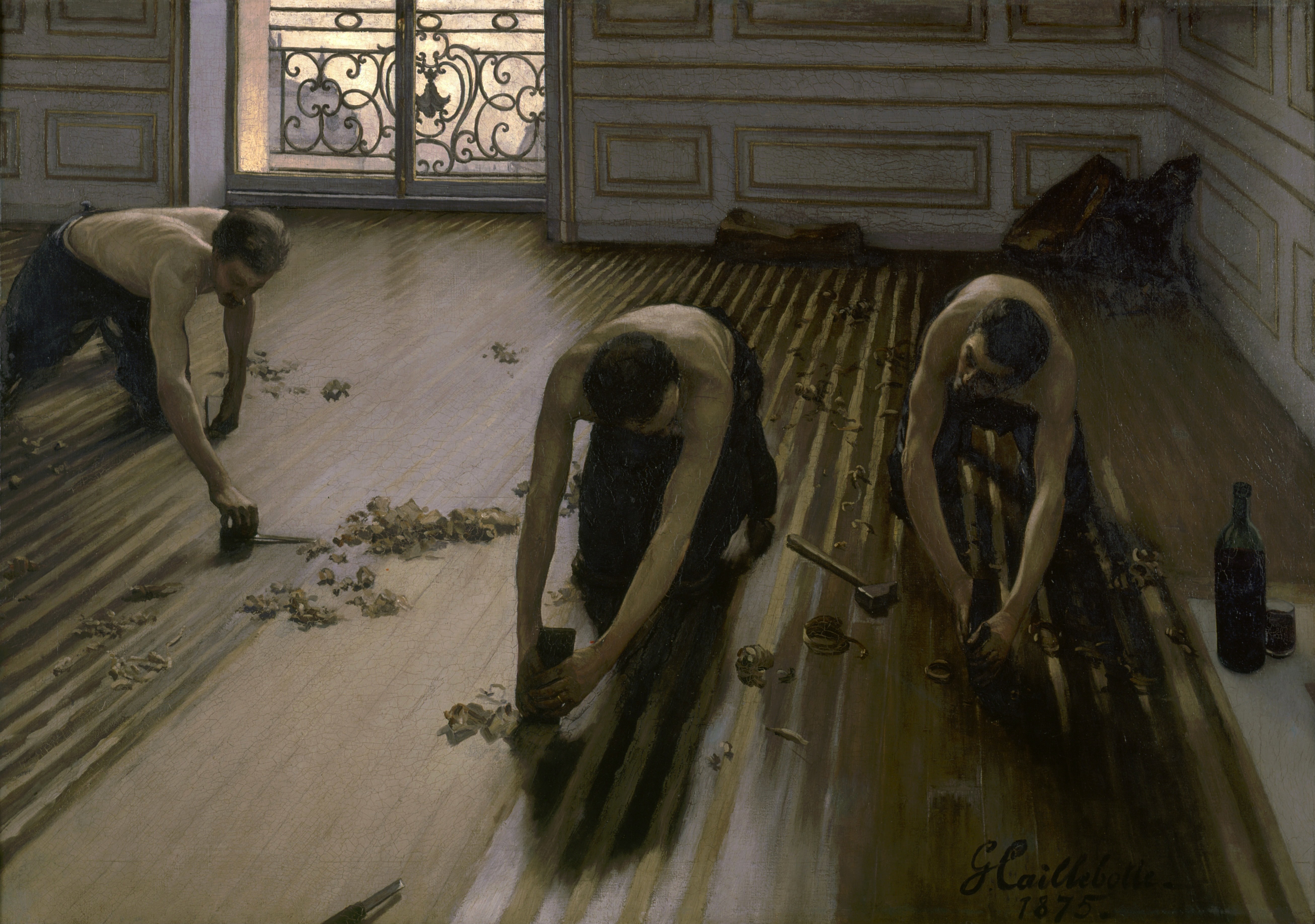Painted in 1875, this work illustrates Caillebotte's continued interest in perspective and everyday life. In the scene, the observer stands above three workers on hands and knees, scraping a wooden floor in a bourgeois apartment— now believed to be Caillebotte's own studio at 77, rue de Miromesnil in the 8th arrondissement of Paris. A window on the back wall admits natural light. The workers are all shown with nude torsos and tilted heads, suggesting a conversation. This is one of the first paintings to feature the urban working class. There is a motif of curls in the image, from the wood shavings on the floor to the pattern of ironwork in the window grill to the arched backs and arms of the workers. The repetition in the image, with the three workers engaged in different aspects of the same activity but having similar poses, is similar to works by Caillebotte's contemporary, Edgar Degas. Despite the effort, Caillebotte put into the painting, it was rejected by France's most prestigious art exhibition, the Salon, in 1875. The depiction of working-class people in their trade, not fully clothed, shocked the jurors and was deemed a "vulgar subject matter".




The Floor Scrapers
oil on canvas • 102 x 146.5 cm